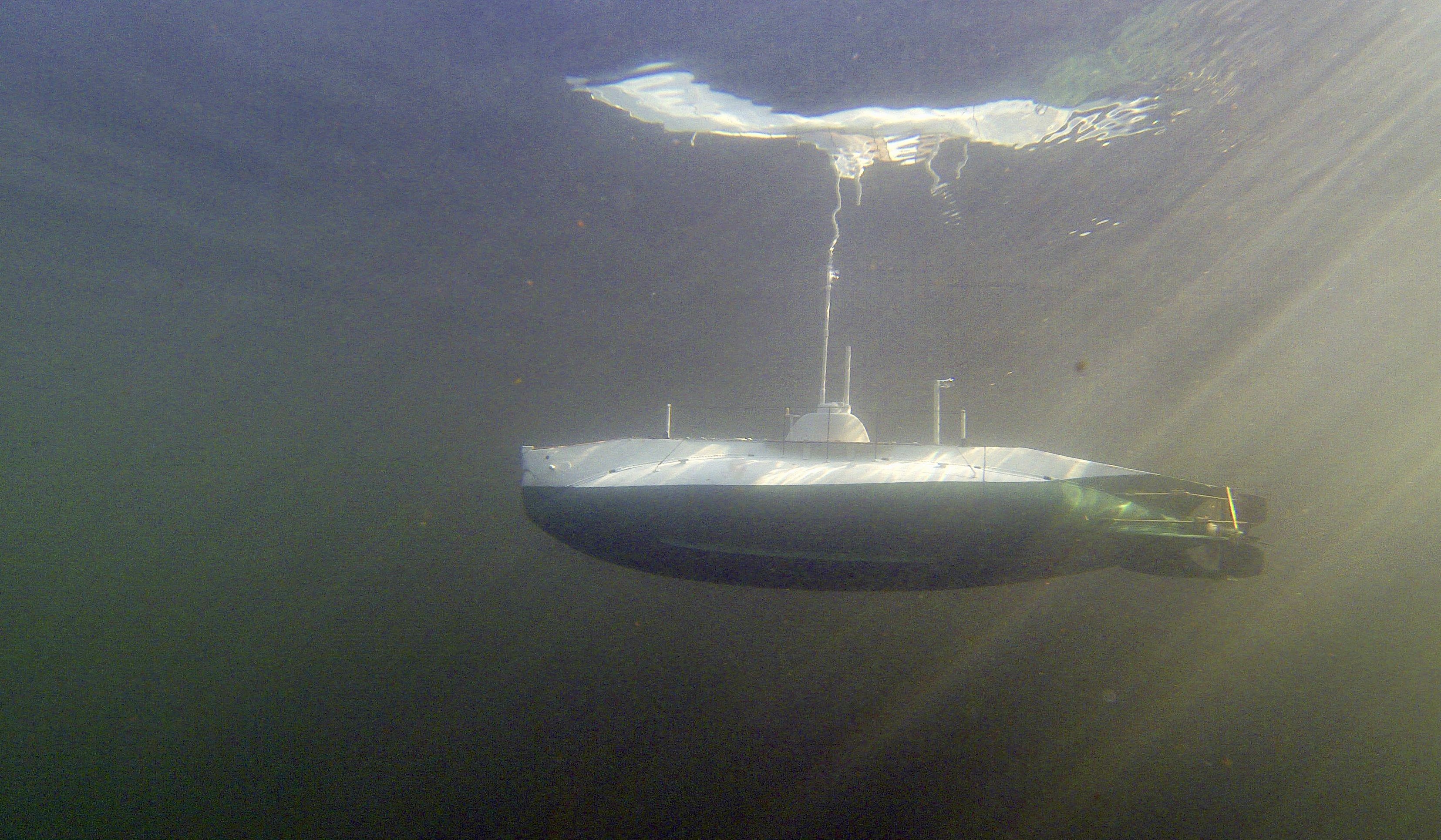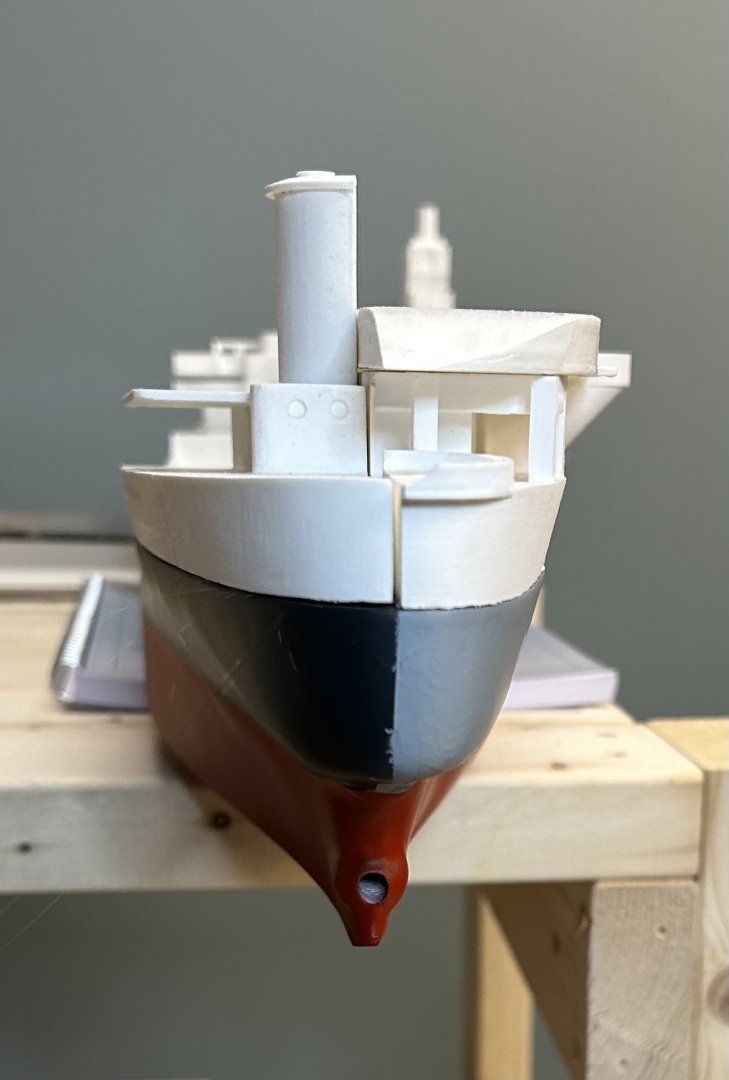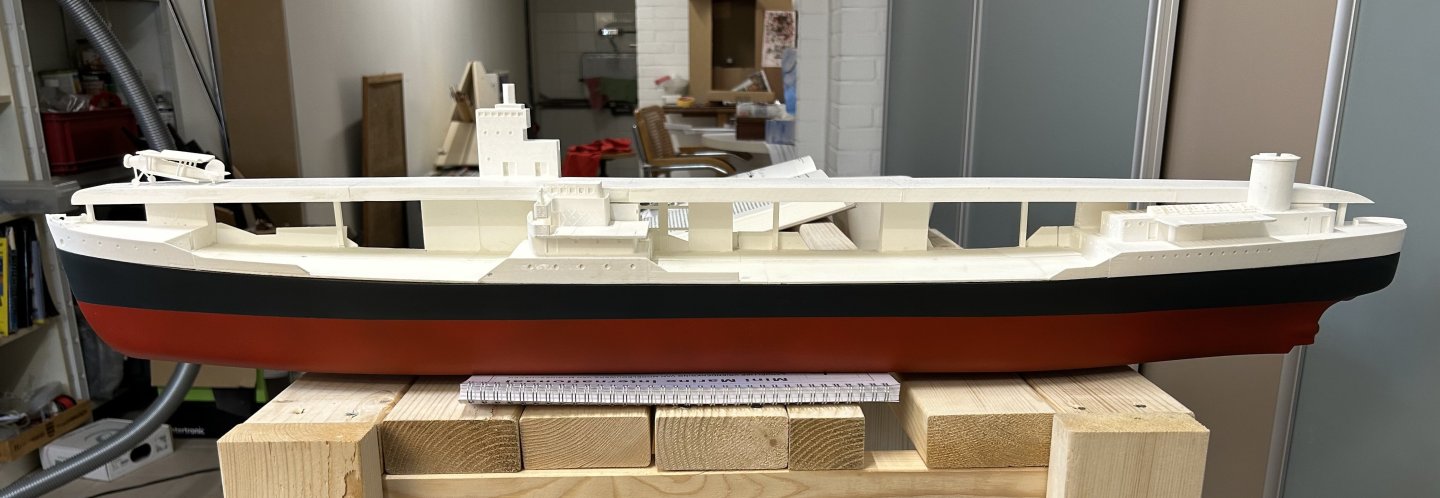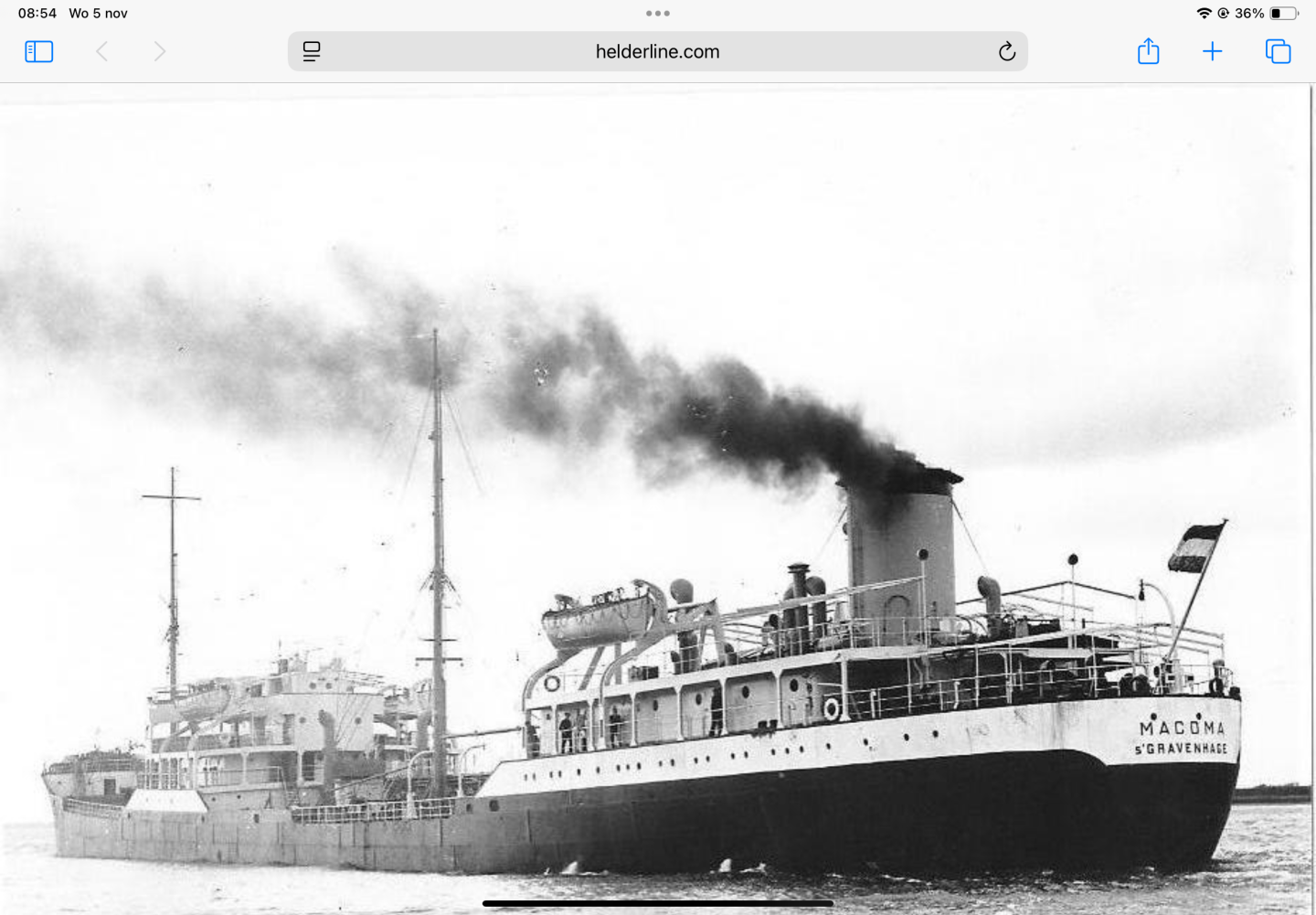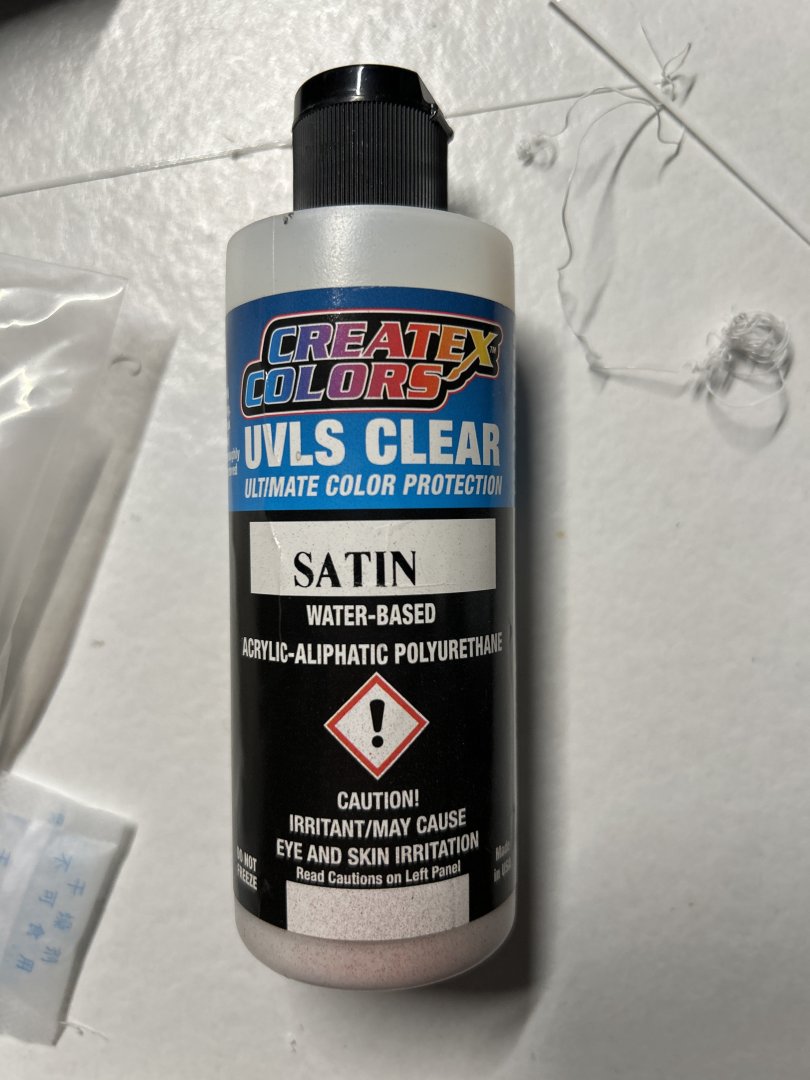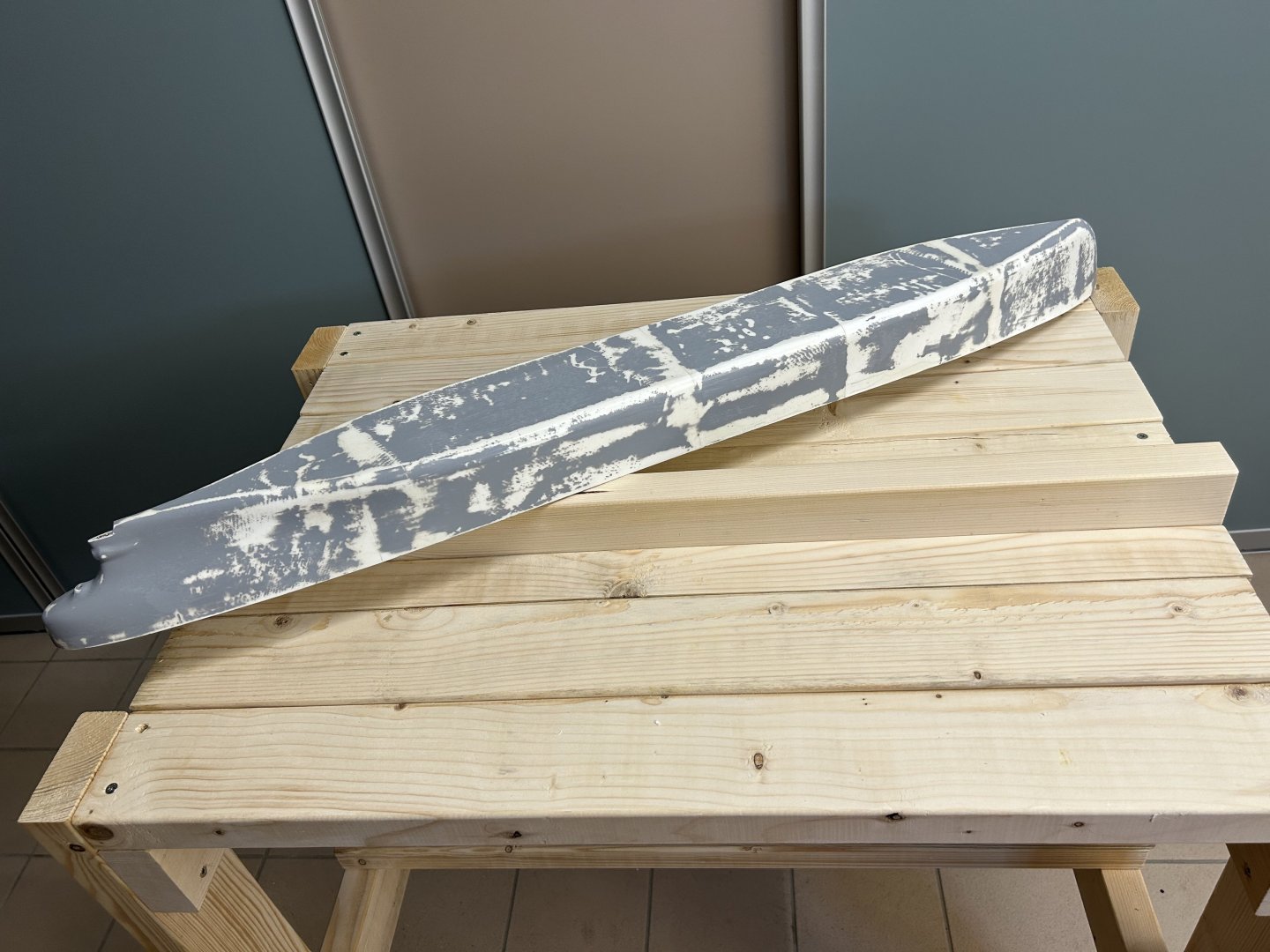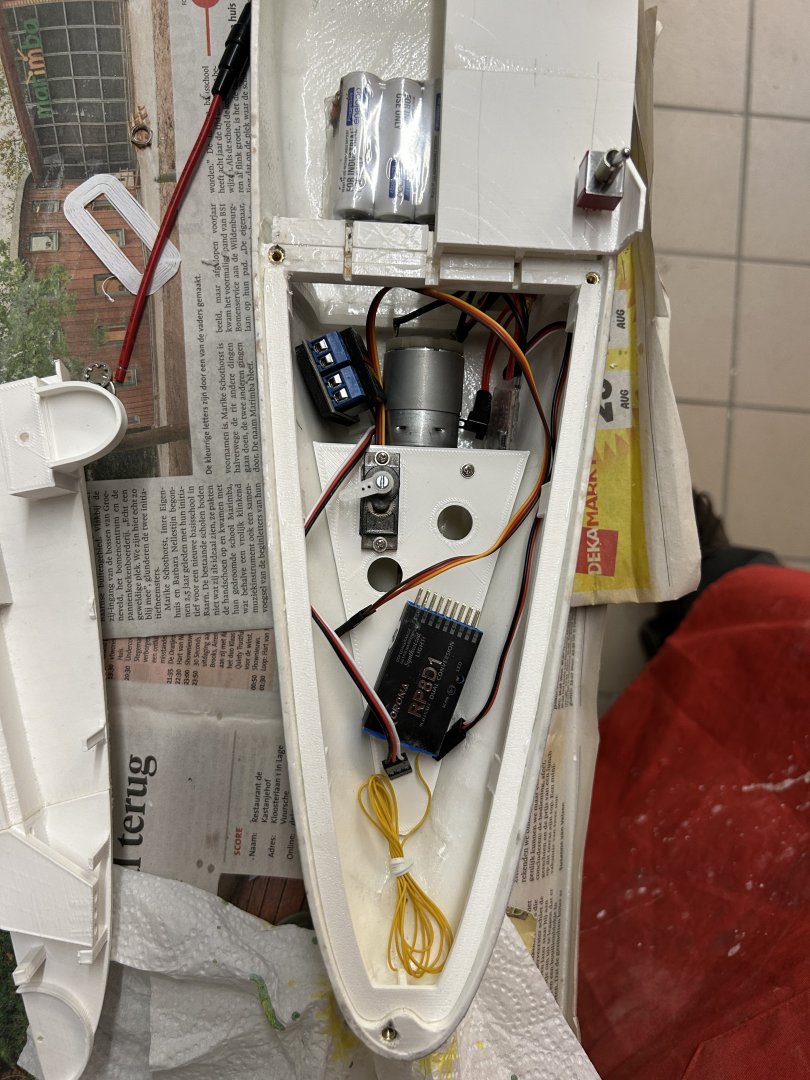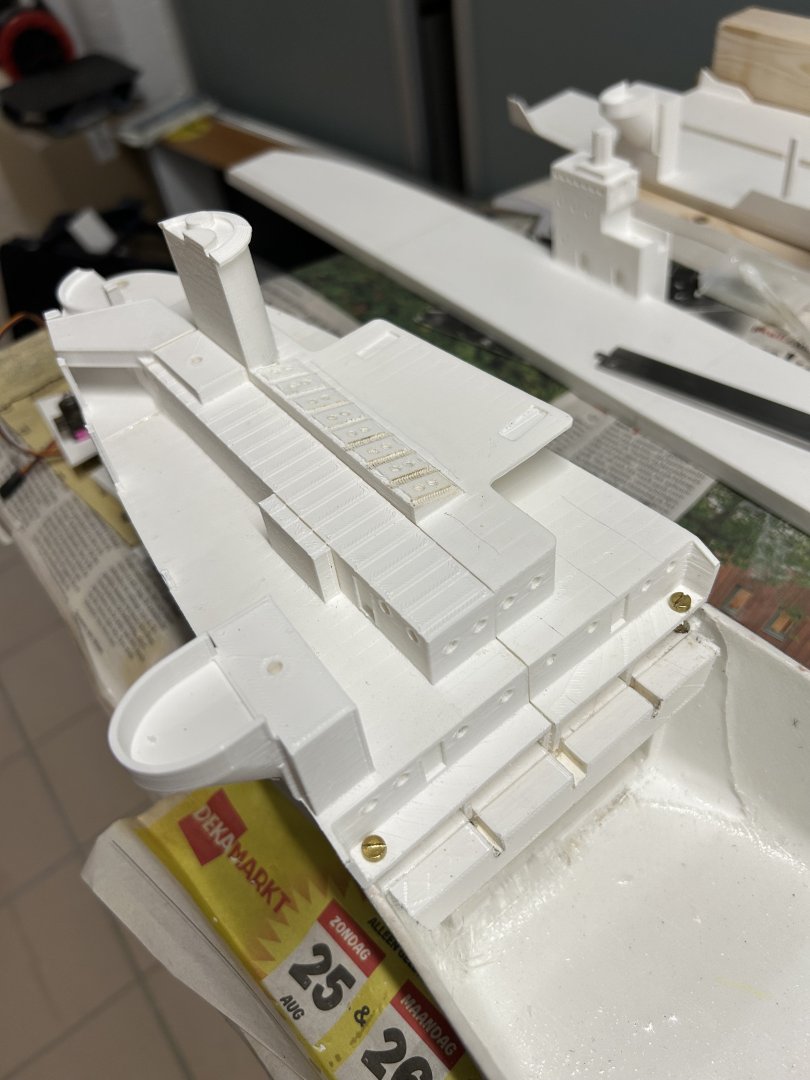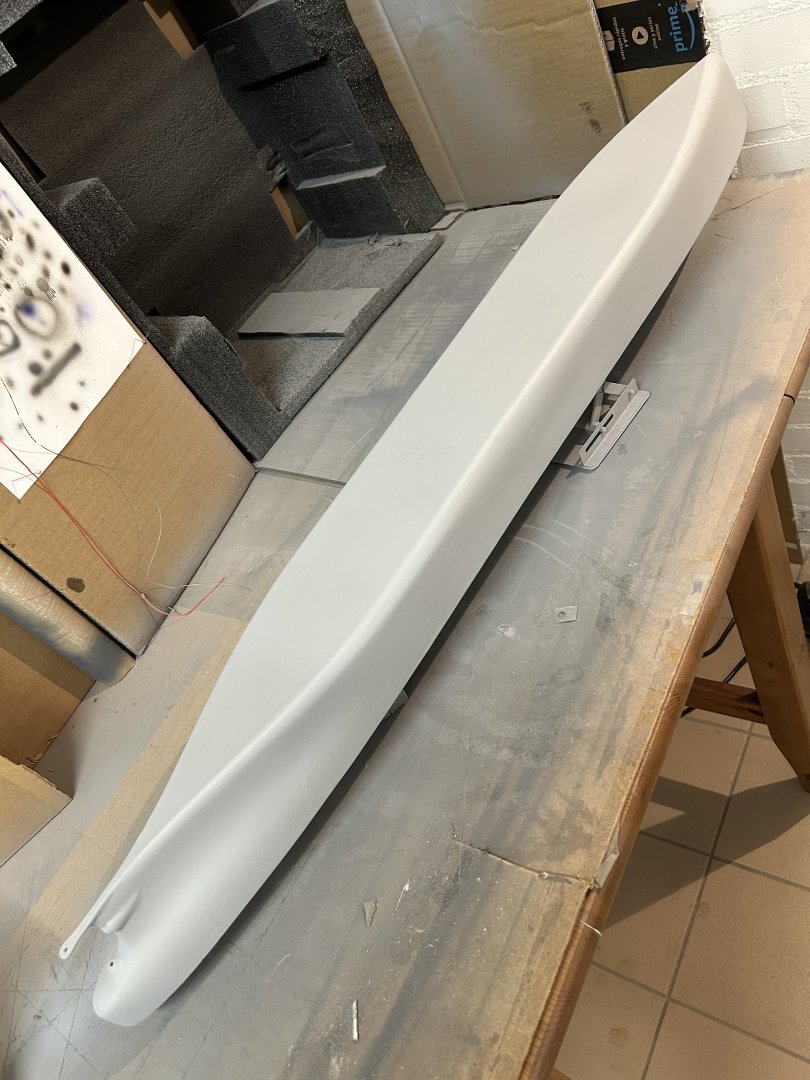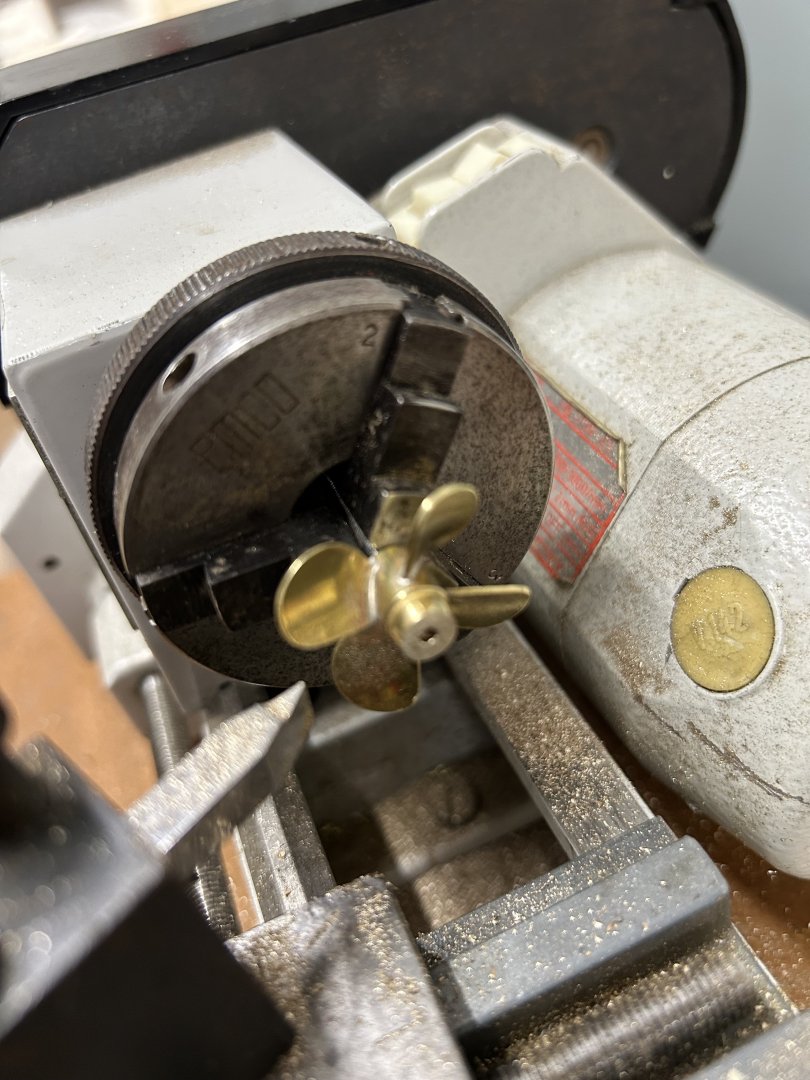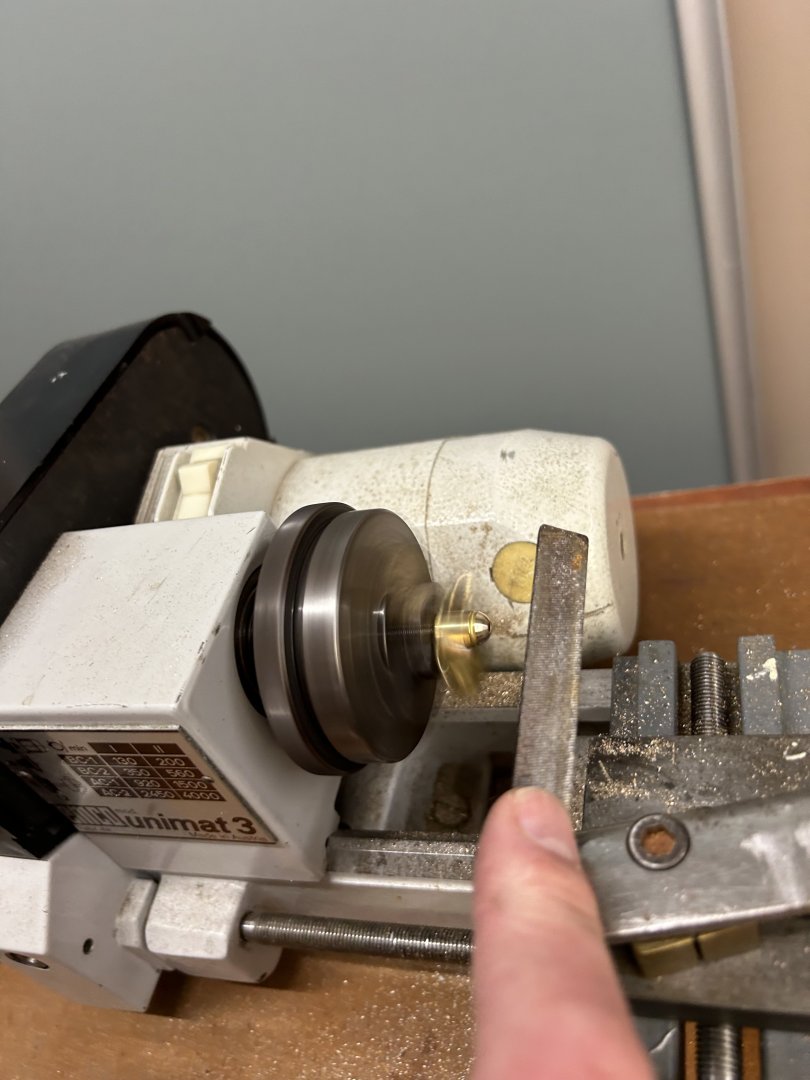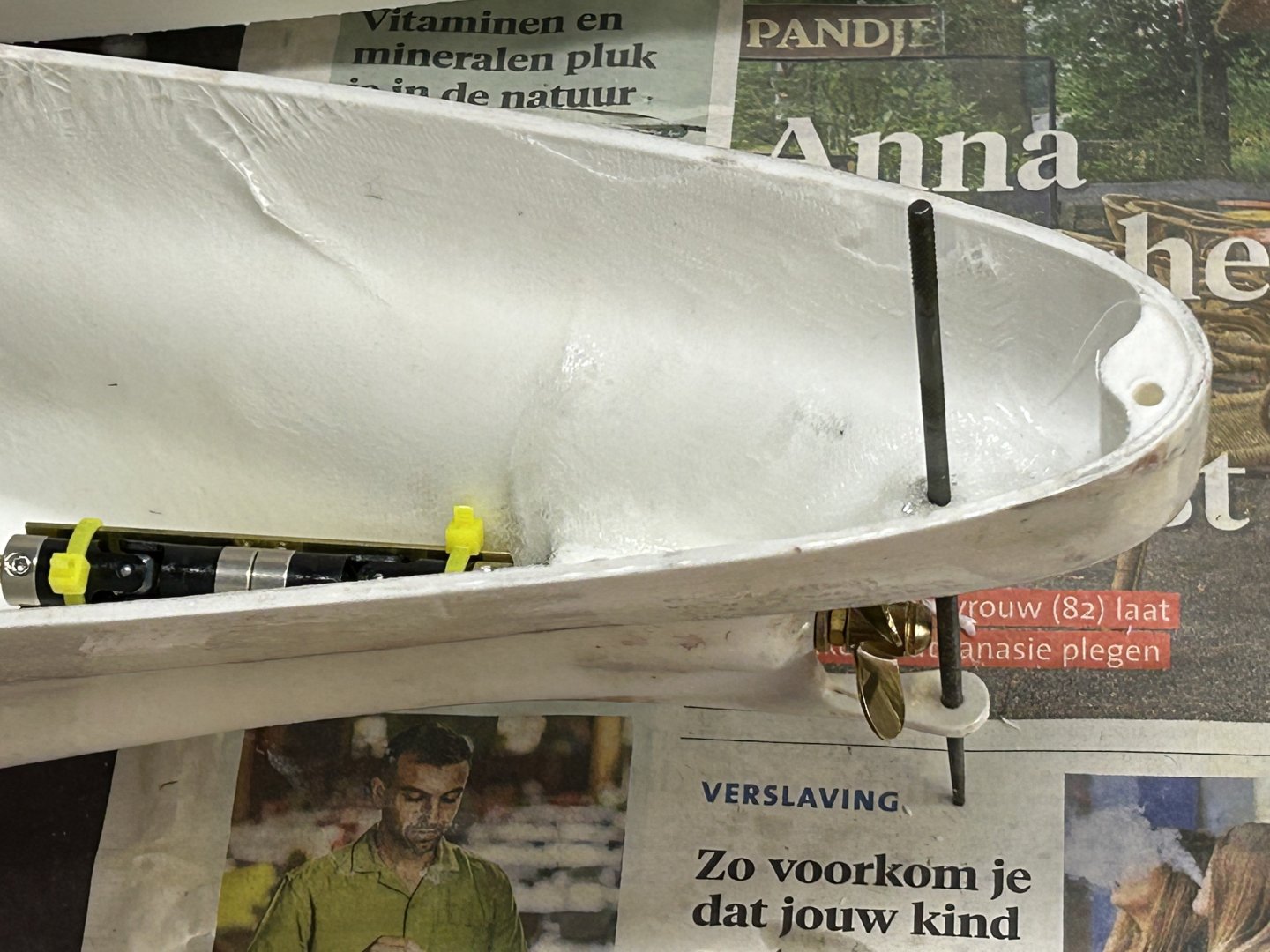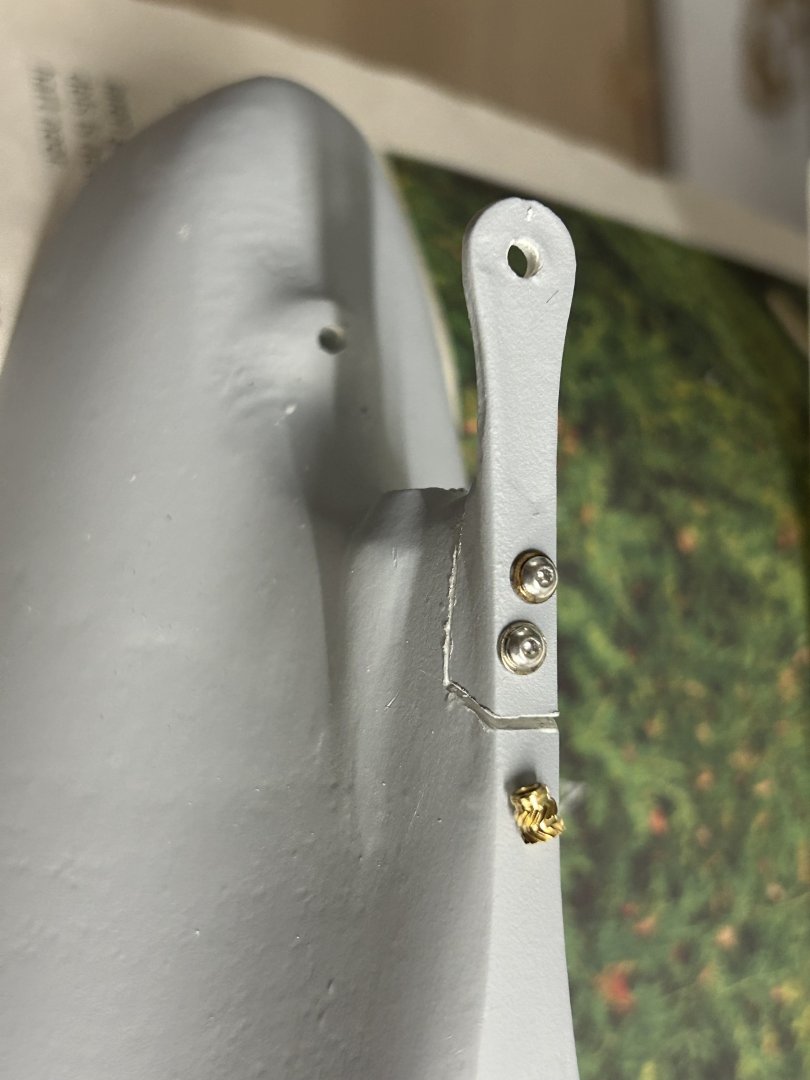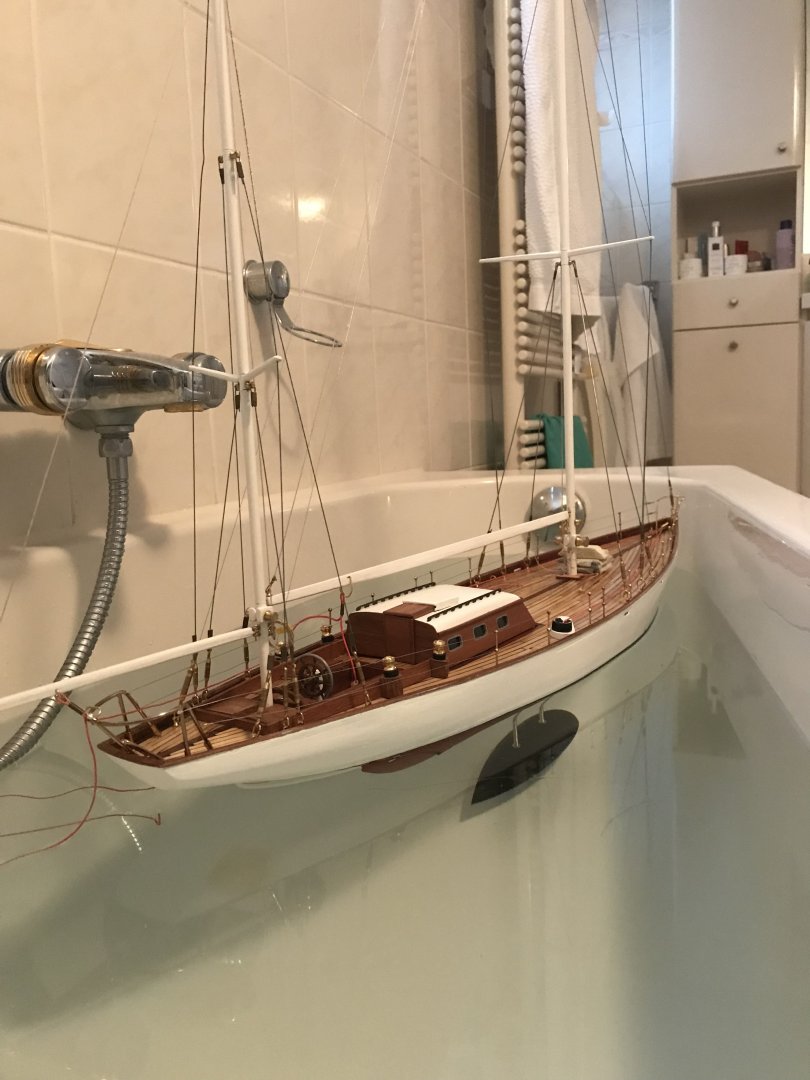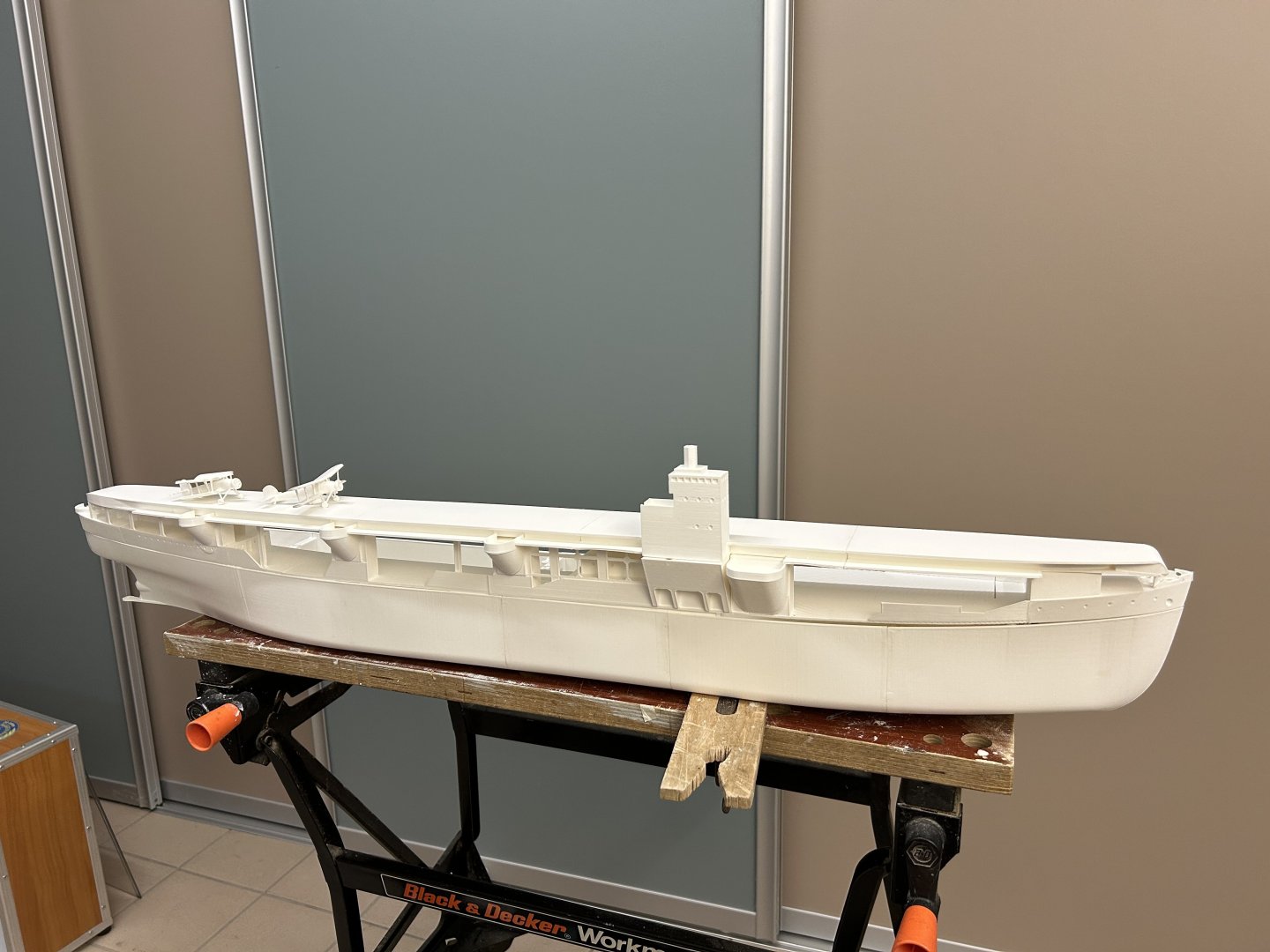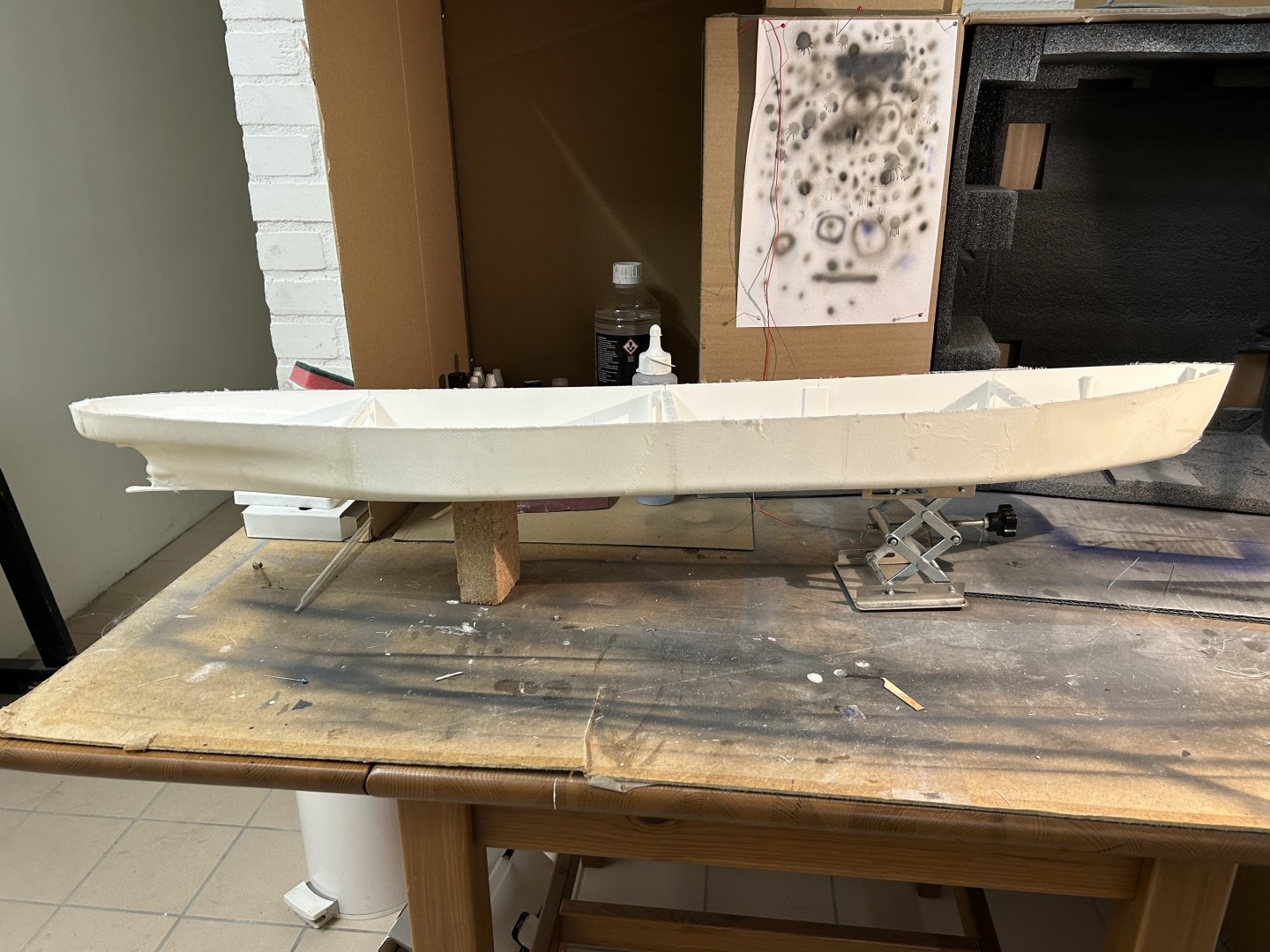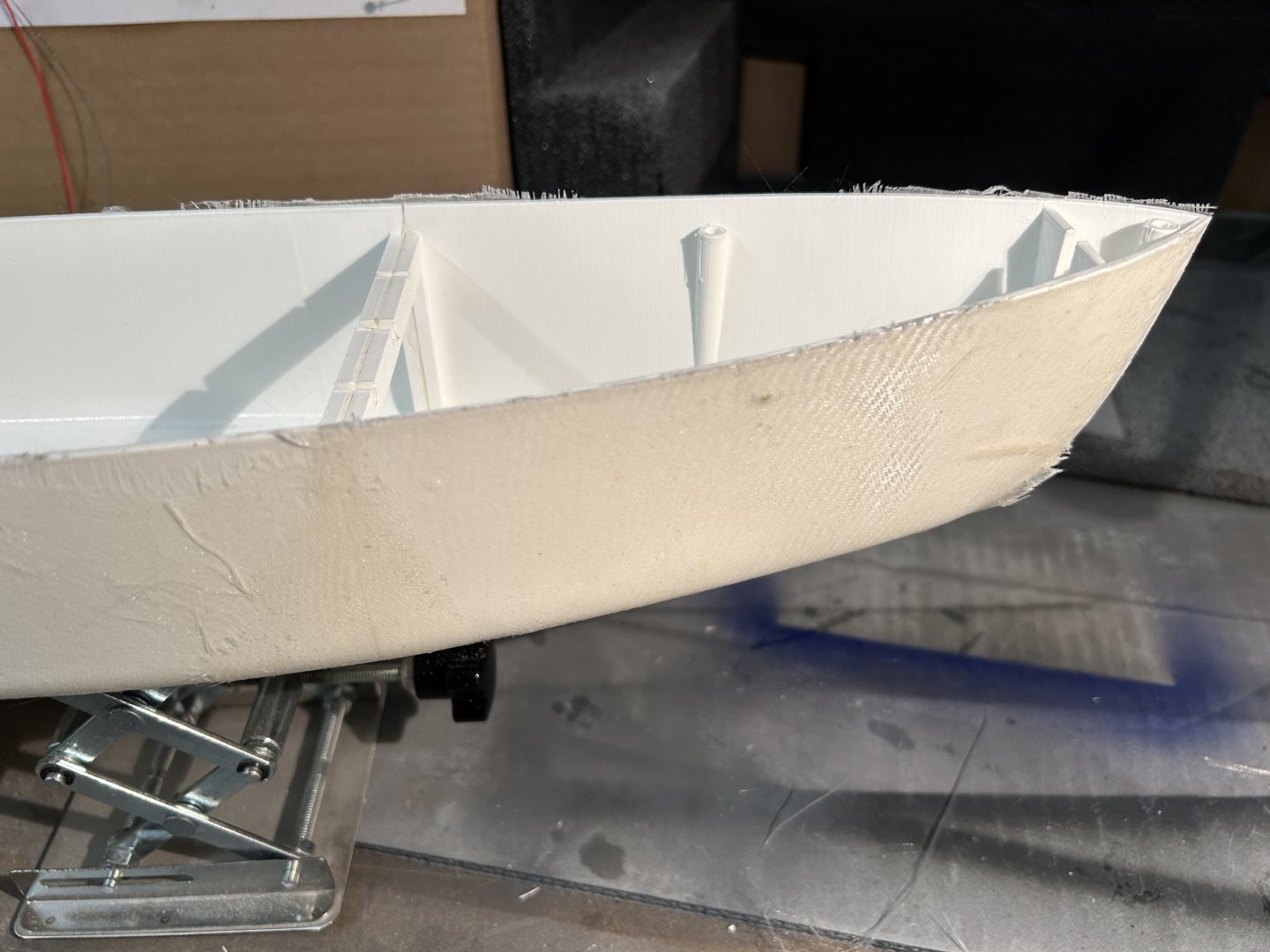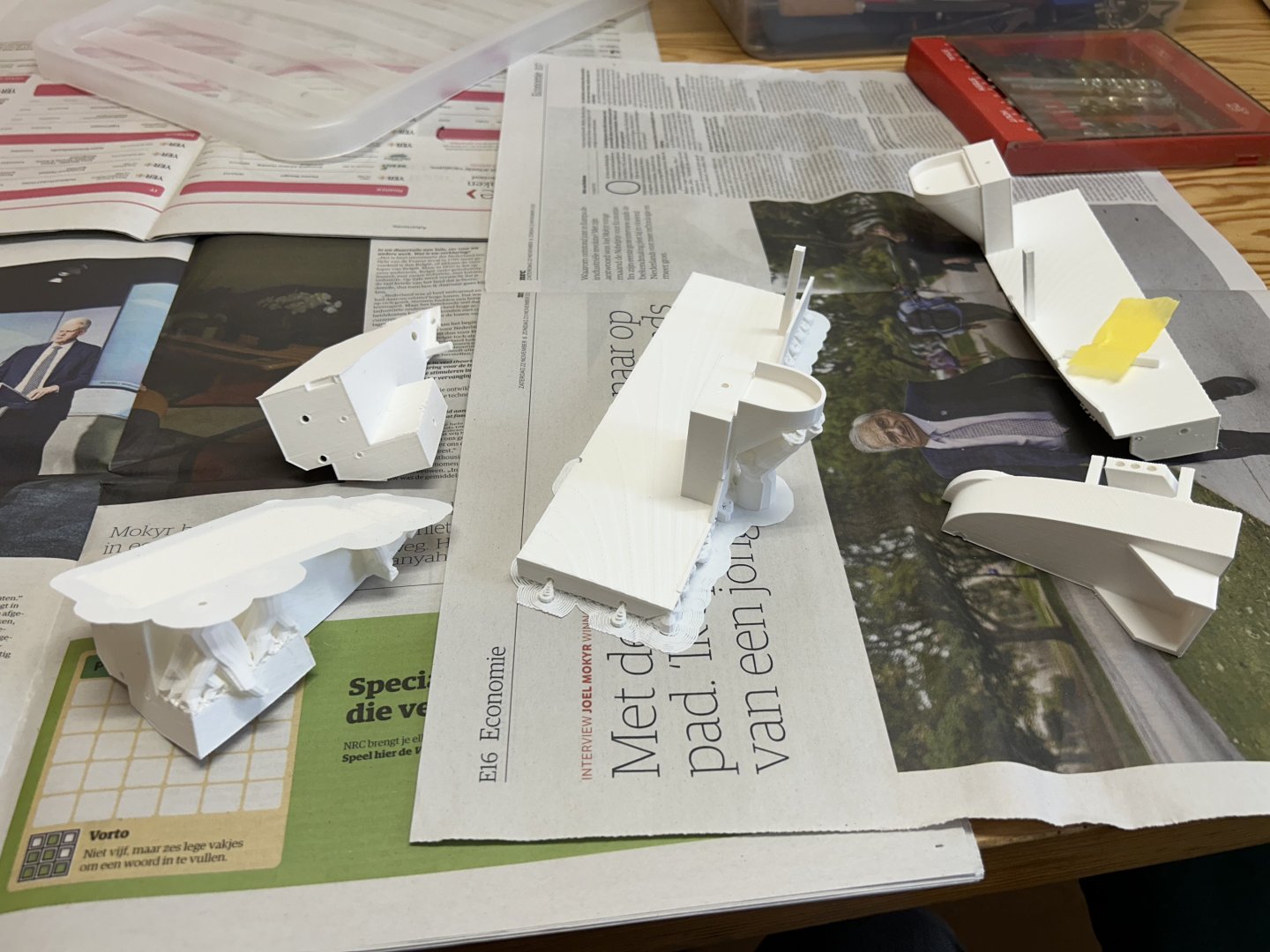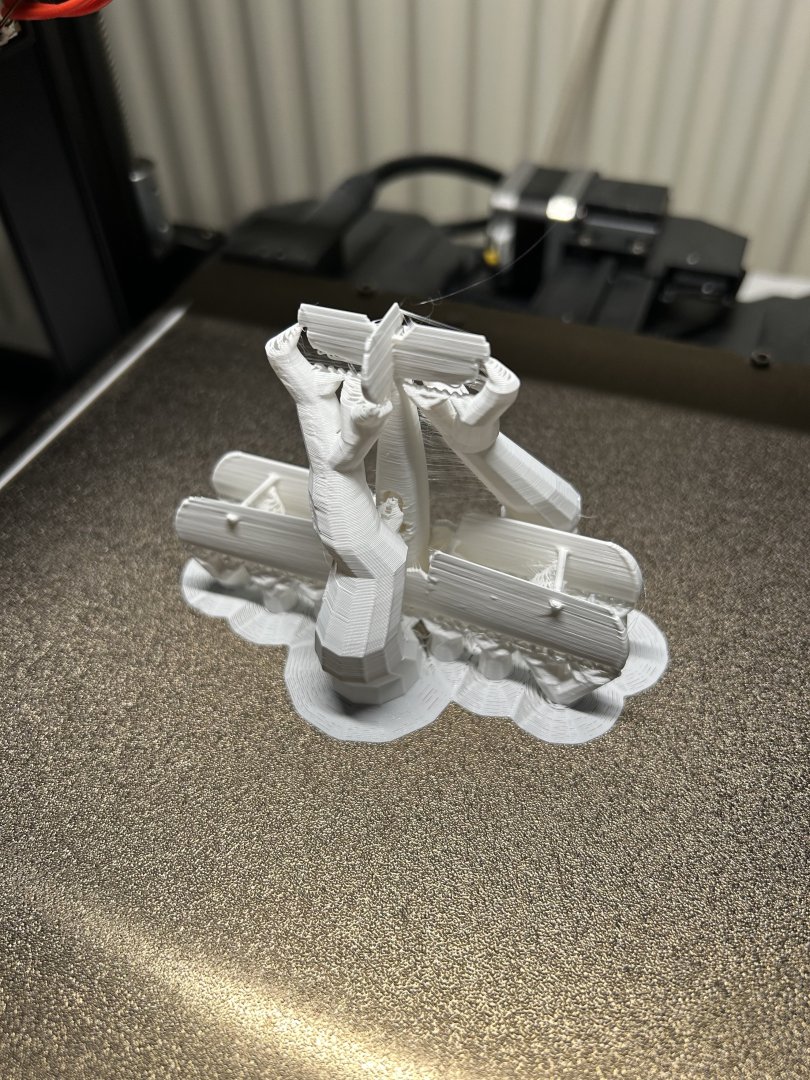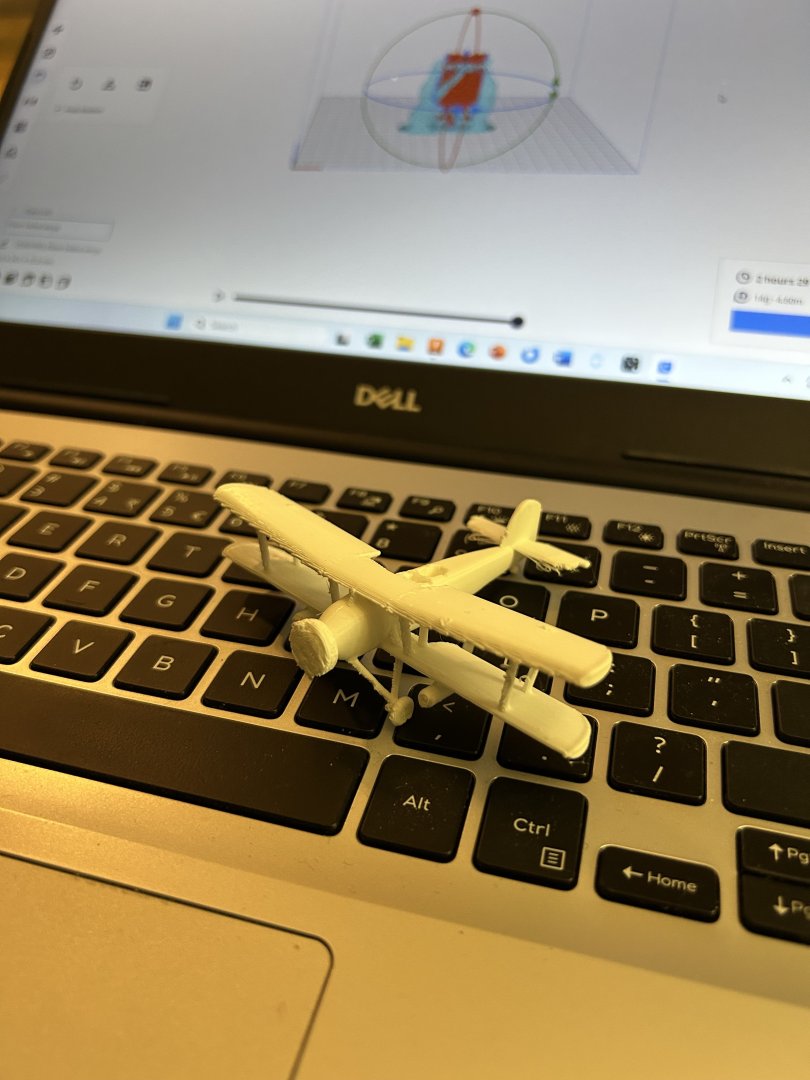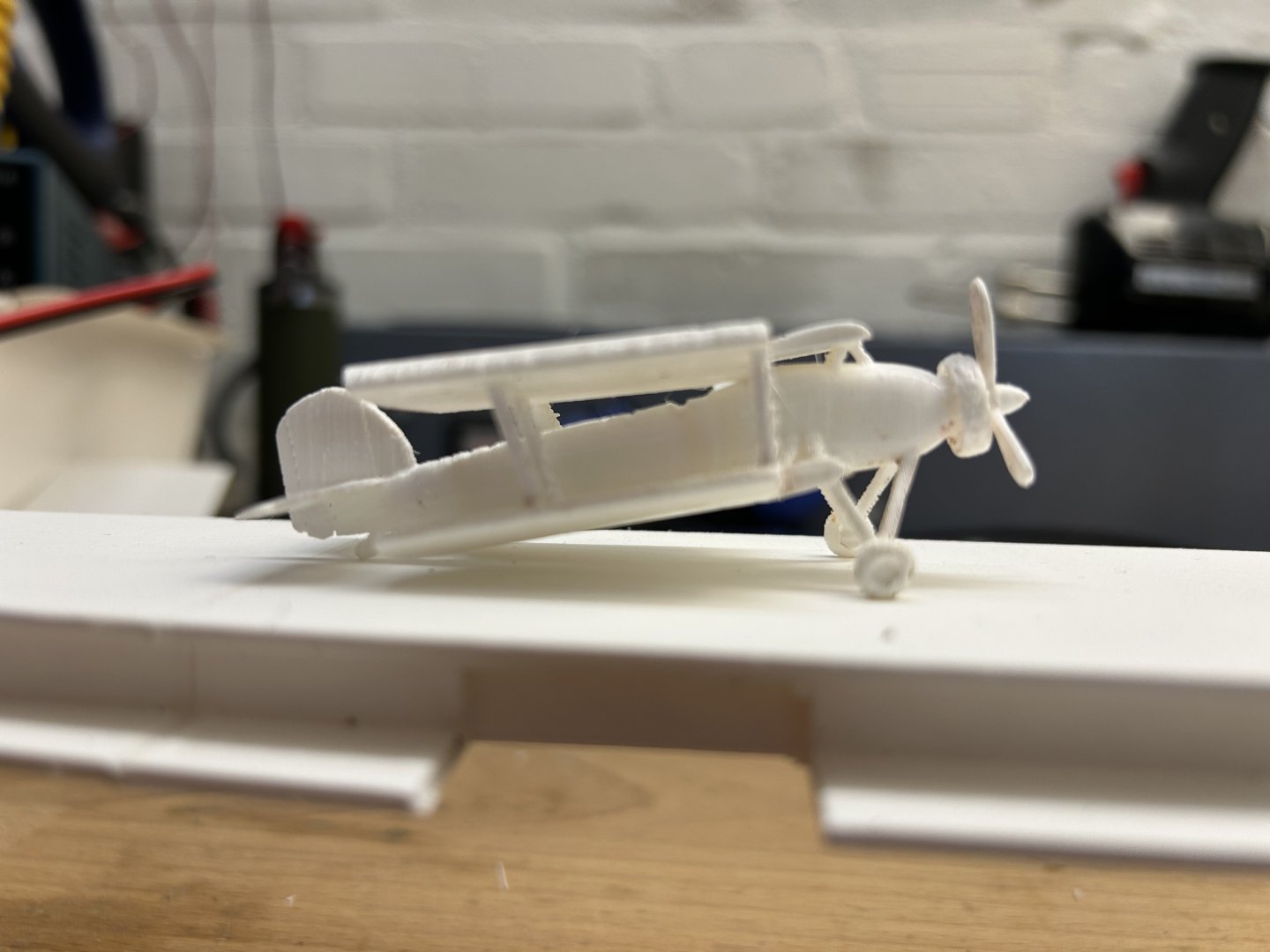-
Posts
236 -
Joined
-
Last visited
-
 KeithAug reacted to a post in a topic:
USS Cape (MSI-2) by Dr PR - 1:48 - Inshore Minesweeper
KeithAug reacted to a post in a topic:
USS Cape (MSI-2) by Dr PR - 1:48 - Inshore Minesweeper
-
 FreekS reacted to a post in a topic:
Cangarda 1901 by KeithAug - Scale 1:24 - Steam Yacht
FreekS reacted to a post in a topic:
Cangarda 1901 by KeithAug - Scale 1:24 - Steam Yacht
-
Interesting enough, this experiment (making soap out of fat) was done in high school chemistry classes! I am a professional “soap” chemist (I developed cleaners), and Valeriy’s method is absolutely sound. But just like when the acetone evaporates leaving a tiny amount of pure fat on brass, when you get caustic soda (NaOH) in your eye even in a small amount, the water evaporates and concentrates up the caustic, damaging your eyes. so by all means use this method, but wear safety glasses and take care with NaOH!!
- 469 replies
-
- minesweeper
- Cape
-
(and 1 more)
Tagged with:
-
 FreekS reacted to a post in a topic:
DKM Bismarck by MikeConnectrix - Scale 1:150 - 3D printed - RADIO
FreekS reacted to a post in a topic:
DKM Bismarck by MikeConnectrix - Scale 1:150 - 3D printed - RADIO
-
 FreekS reacted to a post in a topic:
USS Cape (MSI-2) by Dr PR - 1:48 - Inshore Minesweeper
FreekS reacted to a post in a topic:
USS Cape (MSI-2) by Dr PR - 1:48 - Inshore Minesweeper
-
 FreekS reacted to a post in a topic:
Libertad 1925 by Valeriy V - Scale 1:100 - Spanish Type F Light Cruiser
FreekS reacted to a post in a topic:
Libertad 1925 by Valeriy V - Scale 1:100 - Spanish Type F Light Cruiser
-
 FreekS reacted to a post in a topic:
Type 26 City-Class frigate by NavyShooter - 3D Print - 1/144 - Display
FreekS reacted to a post in a topic:
Type 26 City-Class frigate by NavyShooter - 3D Print - 1/144 - Display
-
 NavyShooter reacted to a post in a topic:
MV/HMNLS Macoma 1935/1942 by FreekS - 1:144 - 3D-print - RADIO
NavyShooter reacted to a post in a topic:
MV/HMNLS Macoma 1935/1942 by FreekS - 1:144 - 3D-print - RADIO
-
 NavyShooter reacted to a post in a topic:
MV/HMNLS Macoma 1935/1942 by FreekS - 1:144 - 3D-print - RADIO
NavyShooter reacted to a post in a topic:
MV/HMNLS Macoma 1935/1942 by FreekS - 1:144 - 3D-print - RADIO
-
 Canute reacted to a post in a topic:
MV/HMNLS Macoma 1935/1942 by FreekS - 1:144 - 3D-print - RADIO
Canute reacted to a post in a topic:
MV/HMNLS Macoma 1935/1942 by FreekS - 1:144 - 3D-print - RADIO
-
 Canute reacted to a post in a topic:
MV/HMNLS Macoma 1935/1942 by FreekS - 1:144 - 3D-print - RADIO
Canute reacted to a post in a topic:
MV/HMNLS Macoma 1935/1942 by FreekS - 1:144 - 3D-print - RADIO
-
 Canute reacted to a post in a topic:
MV/HMNLS Macoma 1935/1942 by FreekS - 1:144 - 3D-print - RADIO
Canute reacted to a post in a topic:
MV/HMNLS Macoma 1935/1942 by FreekS - 1:144 - 3D-print - RADIO
-
 Canute reacted to a post in a topic:
MV/HMNLS Macoma 1935/1942 by FreekS - 1:144 - 3D-print - RADIO
Canute reacted to a post in a topic:
MV/HMNLS Macoma 1935/1942 by FreekS - 1:144 - 3D-print - RADIO
-
 Canute reacted to a post in a topic:
MV/HMNLS Macoma 1935/1942 by FreekS - 1:144 - 3D-print - RADIO
Canute reacted to a post in a topic:
MV/HMNLS Macoma 1935/1942 by FreekS - 1:144 - 3D-print - RADIO
-
 Canute reacted to a post in a topic:
MV/HMNLS Macoma 1935/1942 by FreekS - 1:144 - 3D-print - RADIO
Canute reacted to a post in a topic:
MV/HMNLS Macoma 1935/1942 by FreekS - 1:144 - 3D-print - RADIO
-
 Canute reacted to a post in a topic:
MV/HMNLS Macoma 1935/1942 by FreekS - 1:144 - 3D-print - RADIO
Canute reacted to a post in a topic:
MV/HMNLS Macoma 1935/1942 by FreekS - 1:144 - 3D-print - RADIO
-
 FreekS reacted to a post in a topic:
SS Virginia V by mdulaney - Scale 1:48 - 1922 Maiden Voyage
FreekS reacted to a post in a topic:
SS Virginia V by mdulaney - Scale 1:48 - 1922 Maiden Voyage
-
 FreekS reacted to a post in a topic:
Herzogin Cecilie 1902 by Jim Lad - Four Masted Barque
FreekS reacted to a post in a topic:
Herzogin Cecilie 1902 by Jim Lad - Four Masted Barque
-
I do John, but also the two masts on the tanker are going to look funny to an approaching swordfish. Somehow I want to make sure (probably through colours) that the tanker view dominates from one side and the carrier from the other. Not all issues are solved…..
-
@KeithAug weight wise that will be easy to compensate with ballast. My main worry is the high carrier deck on one side (see below)! after some more sanding, spray filling and priming the hull looked good for painting. The primer had been airbrushed on and is dark grey. I carefully reviewed all the black/white photos of the tanker and carrier and ordered the color matched airbrush paints. Then taped off the underwater ship and airbrushed that red. The next day I retaped the hull and airbrushed the carrier side of the hull in light blue/gray. The dark grey primer on the tanker side is reasonable for a tanker. After removal of the tape the hull looks good! Some touchup will be needed but I added the decks and deckhouses to get a first feel for the effect the “split ship” will have! next step is to apply some clear coat layers as protection, then I can install the drivetrain to test if it has power enough, and find out how much ballast is needed. in parallel is the work on sanding and using filler and primer on the deck parts.
-
- 469 replies
-
- minesweeper
- Cape
-
(and 1 more)
Tagged with:
-
 FreekS reacted to a post in a topic:
Cangarda 1901 by KeithAug - Scale 1:24 - Steam Yacht
FreekS reacted to a post in a topic:
Cangarda 1901 by KeithAug - Scale 1:24 - Steam Yacht
-
 FreekS reacted to a post in a topic:
Type 26 City-Class frigate by NavyShooter - 3D Print - 1/144 - Display
FreekS reacted to a post in a topic:
Type 26 City-Class frigate by NavyShooter - 3D Print - 1/144 - Display
-
 FreekS reacted to a post in a topic:
DKM Bismarck by MikeConnectrix - Scale 1:150 - 3D printed - RADIO
FreekS reacted to a post in a topic:
DKM Bismarck by MikeConnectrix - Scale 1:150 - 3D printed - RADIO
-
Spray putty is a 1-component filler in a 400ml aerosol can. It’s very good for filling smaller scratches and unevenness, quick drying and easy to sand wet and dry. For me, as PLA is so hard to sand, it does a good job of filling the layered patterns the 3D printer leaves behind. I cannot imagine it’s something only known here, I think it comes from car repair but lots of people use it for model boats. Maybe the is a different English word for it? example:https://www.colormatic.com/en/products/aerosols-and-putties/paint-preparation/filling/1k-spray-putty
-
A little bit of progress - the hull has been primed after the spray putty, revealing some further need for sprayfiller. The deck sections have started to go through that process of sanding and filling and… too. i prepared the back part of the deck and aft deckhouse to be removable. Found some m3 insert nuts and using a soldering iron pressed these into drilled holes. I also printed and glued in place a 7mm wide ledge that will get a waterproof seal made of a plate if cell-rubber. That works for my submarines so should keep water out of the tanker too. underneath the aft deckhouse I will need to position all technology that needs to be accessible. Only the ballast will come further forward and after trimming the forward parts of the deck can be glued in the hull. The technology is pretty simple, a servo for the rudder, the motor - shaft assembly, a relais unit that allows switching of the deck lights and a receiver. The motor does not draw a lot of power, so I plan to provide that power with an old set of eneloop NiMH batteries. That will give me 2000mAh at 12V. The aft deckhouse fits well to hull, so I’m happy so far.
-
The hull now has epoxy/glass textile both on the outside and inside. After several rounds of sanding and epoxy putty I now used spray putty on the hull. Four layers so far - looks much better (splits between the hull sections are now invisible) but will be continuing sanding…. the superstructures are too complex for spray putty (too many shadows) - so have been sanding them in preparation for 2 comp epoxy putty applied manually. A 4-blade Raboesch brass prop came in, but the hub needs shortening or the rudder won’t fit. Ideal job for my small lathe, first filed off part of the hub, reformed it on the lathe and carefully filled the emerged hole with soft solder. The prop axle and motor mount are made but not glued in yet. to be able to mount a rudder (and maintain it and the drivetrain, I cut off the “foot” of the rudder from the hull (it must have a name…). I drilled 3.2mm holes in the PLA hull, and using a hot soldering iron pressed two 3,5mm M2 inserts into the bottom of the hull. This fixed the inserts beautifully (I did test this on a spare piece of PLA) and allowed me to screw the rudder “foot” back on with 2 M2 bolts. Seems very stable and firm. next back to sanding…
-
Lots of parts have been printed. It’s now possible to loosely assemble what the ship(s) will look like. then started to treat the hull with a coat of epoxy; and after a few hours curing (still wet) covered with a layer of 80g/m2 of glastextile, then another coat of epoxy in wet. Result is not very good; the glass textile has some folds and bubbles. But the hull is clearly stiffer and stronger. Next I’ll try to sand the first layer and probably apply another layer of glass textile and epoxy.
-
Thanks @NavyShooter didn’t I see a 1/144 swordfish of yours on Thingiverse?😀 Here is how the first prints came out, the first during printing - note the horizontal stabilisers lost contact with the support. Then the full plane after removal of the support, and the second version with folded wings (and temp attached prop) after initial sanding.
-
Those swordfish (nickname “stringbag”) were old and slow planes, but ideal for low speed landings and takeoffs from carriers. They became most famous for disabling the Bismarck with a torpedo hit in the rudder, and even more so for night raid on Taranto by 21 swordfish from the carrier Illustrious resulting in the disabling of three Italian battleships (a nov 1940 attack much studies by the Japanese…). There were 19 grain tankers and oil tankers converted into MAC-ships, each with 3-6 planes (the converted grain tankers had a hangar that the oil tankers lacked). So Macoma with its 3-4 swordfish was tasked to maintain an air patrol around the convoy all-day round and when possible at night. Picture the gruelling operational tempo, the maintenance of wet and salt incrusted planes in the middle of the North Atlantic, right there on deck! On this photo it may have looked like a picknick… Note also how narrow that deck was… Over 4000 swordfish missions were recorded for the 19 ships during convoy duty. The amazing result: although no swordfish actually sank a u-boat while flying off a mac ship, NO convoy with a MAC-ship attached lost a single merchant ship!! The number of swordfish lost I could not find, but surely it was hazardous duty!
-
This week from my holiday address I could do some sanding and some design of details. Macoma had two to three Fairy Swordfish planes on deck. There was no hangar. Wikipedia has a nice set of side view, top view and front view drawings of the plane, which I used to construct the planes in Fusion. The actual prints will be 7,5cm in length, so I strengthened some elements like the spars between the wings to ensure enough strength. If they print well I can still try to narrow them. I constructed a full plane, then cut off the wings along the hinges, and reattached them in folded position. when viewed on the half-width deck of the carrier it is clear just how difficult it must have been to take off and land on such a narrow deck. Just clearing the island looks hard. Also designed son of the larger details such as lifeboats and the gun aft. printing to resume later this week…
-
I did start the design a bit earlier than the build log - we are now caught up. Plus, 3D printers are slow but there are many hours in the day (and night). Yet what you see here is only the basic shape of the ship(s), sanding, waterproofing, painting and especially detailing will take a long time! Thanks for following!
-
The hull has been printed in 5 parts and glued together. I had an entangled filament on one segment. Looks pretty good but will need epoxy coating, ideally with glass mats. First some sanding to be done. also printed the half flightdeck which has been sanded once. I’ve mostly finished the design of the decks, deckhouses, flight deck support and other larger printable parts but these will take a few weeks to complete and print.
About us
Modelshipworld - Advancing Ship Modeling through Research
SSL Secured
Your security is important for us so this Website is SSL-Secured
NRG Mailing Address
Nautical Research Guild
237 South Lincoln Street
Westmont IL, 60559-1917
Model Ship World ® and the MSW logo are Registered Trademarks, and belong to the Nautical Research Guild (United States Patent and Trademark Office: No. 6,929,264 & No. 6,929,274, registered Dec. 20, 2022)
Helpful Links
About the NRG
If you enjoy building ship models that are historically accurate as well as beautiful, then The Nautical Research Guild (NRG) is just right for you.
The Guild is a non-profit educational organization whose mission is to “Advance Ship Modeling Through Research”. We provide support to our members in their efforts to raise the quality of their model ships.
The Nautical Research Guild has published our world-renowned quarterly magazine, The Nautical Research Journal, since 1955. The pages of the Journal are full of articles by accomplished ship modelers who show you how they create those exquisite details on their models, and by maritime historians who show you the correct details to build. The Journal is available in both print and digital editions. Go to the NRG web site (www.thenrg.org) to download a complimentary digital copy of the Journal. The NRG also publishes plan sets, books and compilations of back issues of the Journal and the former Ships in Scale and Model Ship Builder magazines.

